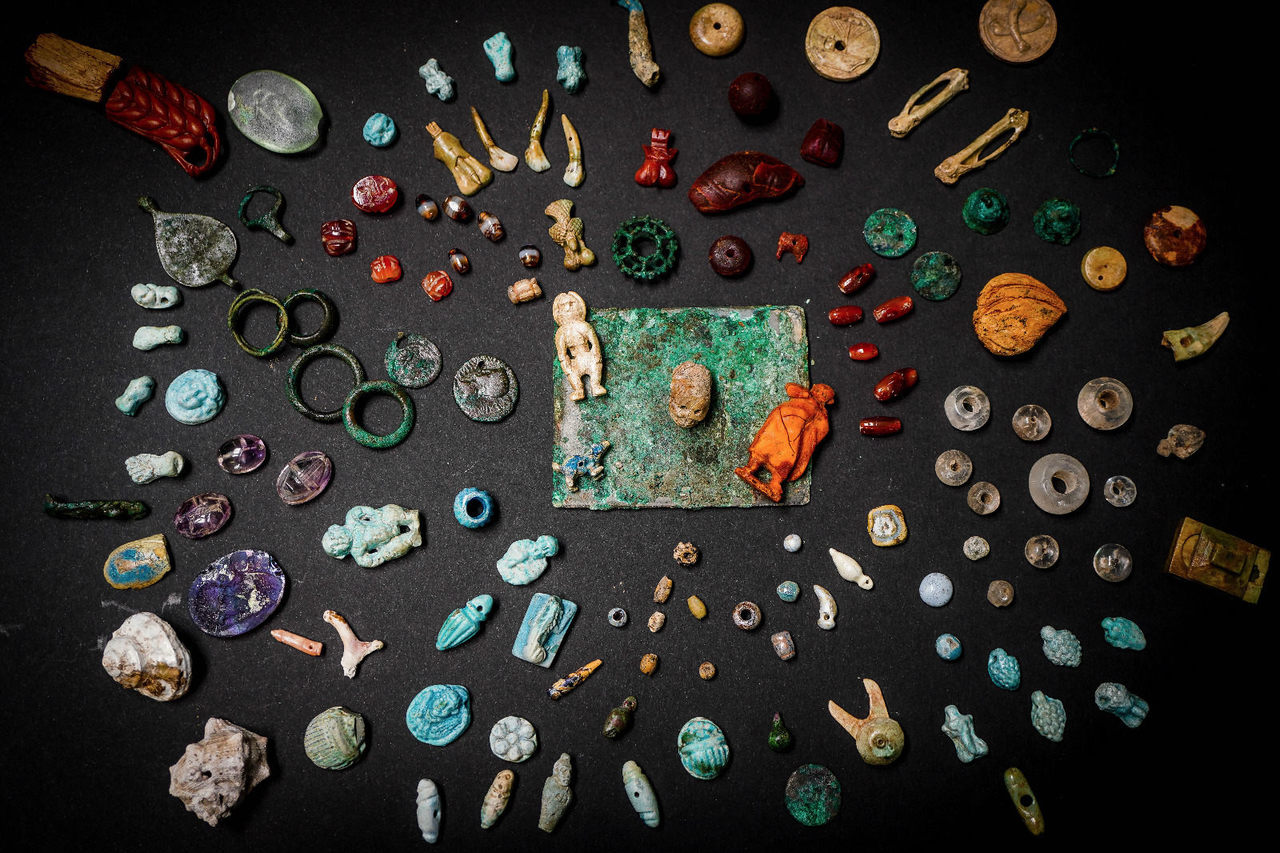New discovery of amulets in Pompeii
One more small archaeological treasure has come to light in the renowned city of Pompeii. Buried by the eruption of the Vesuvius volcano in AD 79, the belongings that the inhabitants had in their homes and that they did not manage to take with them in the heat of flight were exquisitely preserved by the layers of ash and allow archaeologists and historians to know what life was like for the hitherto prosperous Pompeians. One of these objects was a wooden box, of which the bronze clasps were barely in good condition, which contained numerous jewels, gems and figures made of very different materials (glazed ceramic, resins (amber), precious stones, bone, etc.). ..), which have been identified as magical amulets, for which reason it has been nicknamed "The sorceress's treasure".
The box was found in the so-called House of the Garden, in Region V of the archaeological site. In this house the buried bodies of ten victims of the eruption were found, among them several women and children whose DNA is being investigated to verify their possible relationship, and some jewelry and materials similar to those in the box in question were also found. In that same room, looted during the 17th and 18th centuries, one of the victims was wearing an iron ring, and a faience amulet was also found.
Inside the box there was a glass ointment, mirrors, brooches and necklaces of common cut, but also the preserved amulets, which are shaped like phalluses, clenched fists, fig-hands, spikes, a skull, an ear, beetles. Others are references to anthropomorphic beings or divinities, such as one in the form of a human, another amethyst in the form of a woman, and a carnelian with a shape still to be determined. Also a figure of a satyr, and of the Greco-Egyptian divinity Harpocrates -Horus, represented as a child-, as well as a glass bead carved with the face of Dionysus.
The elements mentioned are, in general, symbols of a recurring iconography of good fortune, as well as protection from bad, and attractants of fertility and prosperity. The appearance of Greek and Egyptian elements is a sign of the syncretism and/or personal interest that the religions recently introduced into the empire aroused.
The quality of the carvings suggests the high social position of the inhabitants of the house. In addition, its good conservation has allowed its restoration and its prompt exhibition in the Palaestra Grande. The general director of the Archaeological Park of Pompeii, Massimo Osanna, is enthusiastic about the discovery, since it opens doors to discover the daily life of the inhabitants, and in this case, the life of the women, since all the elements found they belong to this world and to their ornamental use, although due to their variety they do not rule out their use in possible private rituals.
In the following link, you can see several photographs of these amulets that are not wasted for their quality:
Pietro Viktor Carracedo Ahumada - pietrocarracedo@gmail.com
Related Posts:
>Egyptian talismans
>The punishment for magic in Ancient Rome
>Magic in Apuleius
>Witch marks at Creswell Crags (UK)


